Opticks : GPU Optical Photon Simulation for Particle Physics with NVIDIA OptiX
Progress with JUNO + Opticks : GPU Optical Photon Simulation with NVIDIA® OptiX™
Simon C Blyth, IHEP — https://bitbucket.org/simoncblyth/opticks — July 2019, IHEP
Outline
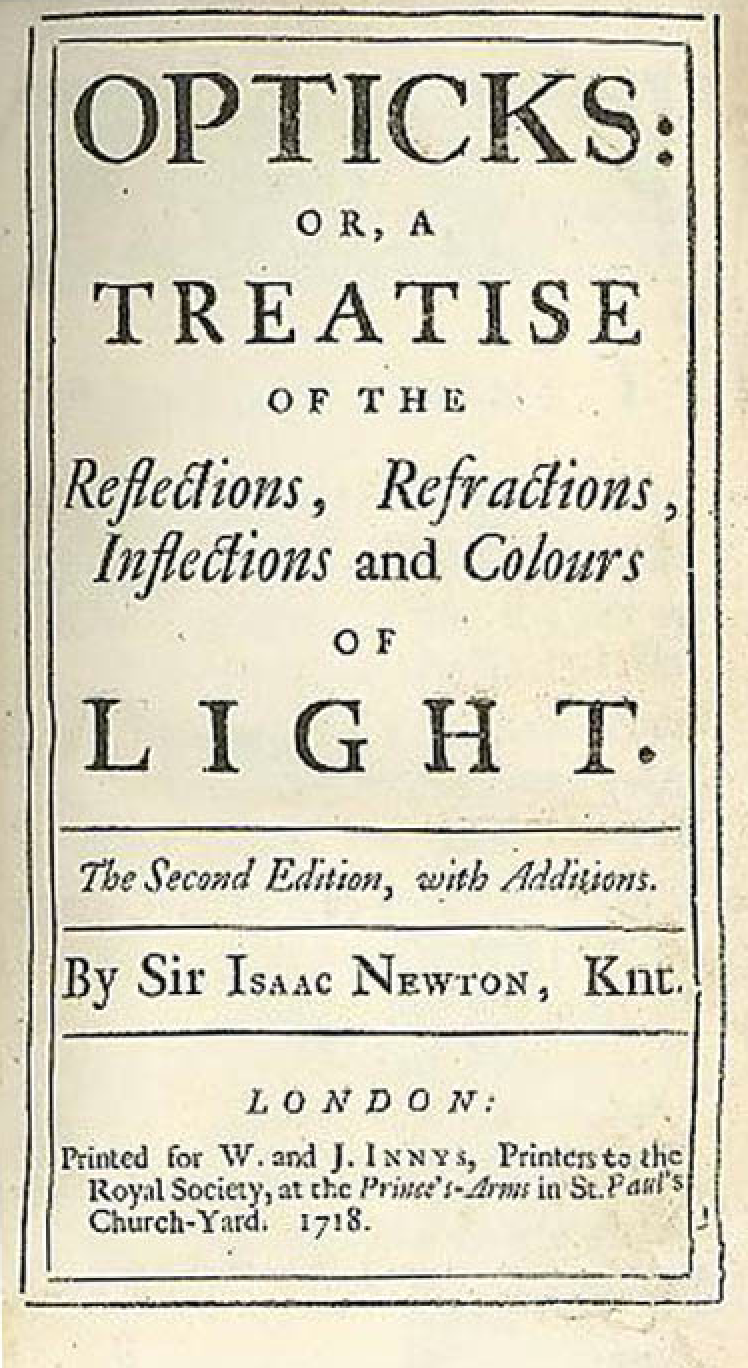
- Introduction
- Optical Photon Simulation Problem...
- Rasterization and Ray Tracing
- Ray Traced Rendering ~ Photon Simulation
- NVIDIA TITAN RTX GPU
- NVIDIA OptiX Ray Tracing Engine
- Boundary Volume Heirarchy (BVH) algorithm
- Opticks Primitives, CSG on GPU
- Translate Geometry and Physics
- Geometry changes enabling translation
- p15 Updates : Support OptiX 6.0.0, RTX mode, RT Cores
- JUNO-360 benchmark, RTX mode speedup, multi-GPU scaling
- p21 Validation : Systematic Scan of 40 JUNO Solids
- Random Aligned Bi-Simulation -> Direct Array Comparison
- p34 Performance : Scanning from 1M to 60M photons
- Opticks vs Geant4 performance (test geometry)
- Opticks : Aims to Revolutionize JUNO Muon Simulation
- (Tao Lin, Simulation Group) Deferred OP Sim using Gensteps
- Opticks Links
Optical Photon Simulation Problem...
JPMT Before Contact 2
Huge CPU Memory+Time Expense
- JUNO Muon Simulation Bottleneck
- ~99% CPU time, memory constraints
- Optical photons : naturally parallel, simple :
- produced by Cerenkov+Scintillation
- yield only Photomultiplier hits
-> Hybrid Solution : Geant4 + Opticks
Ray-tracing vs Rasterization
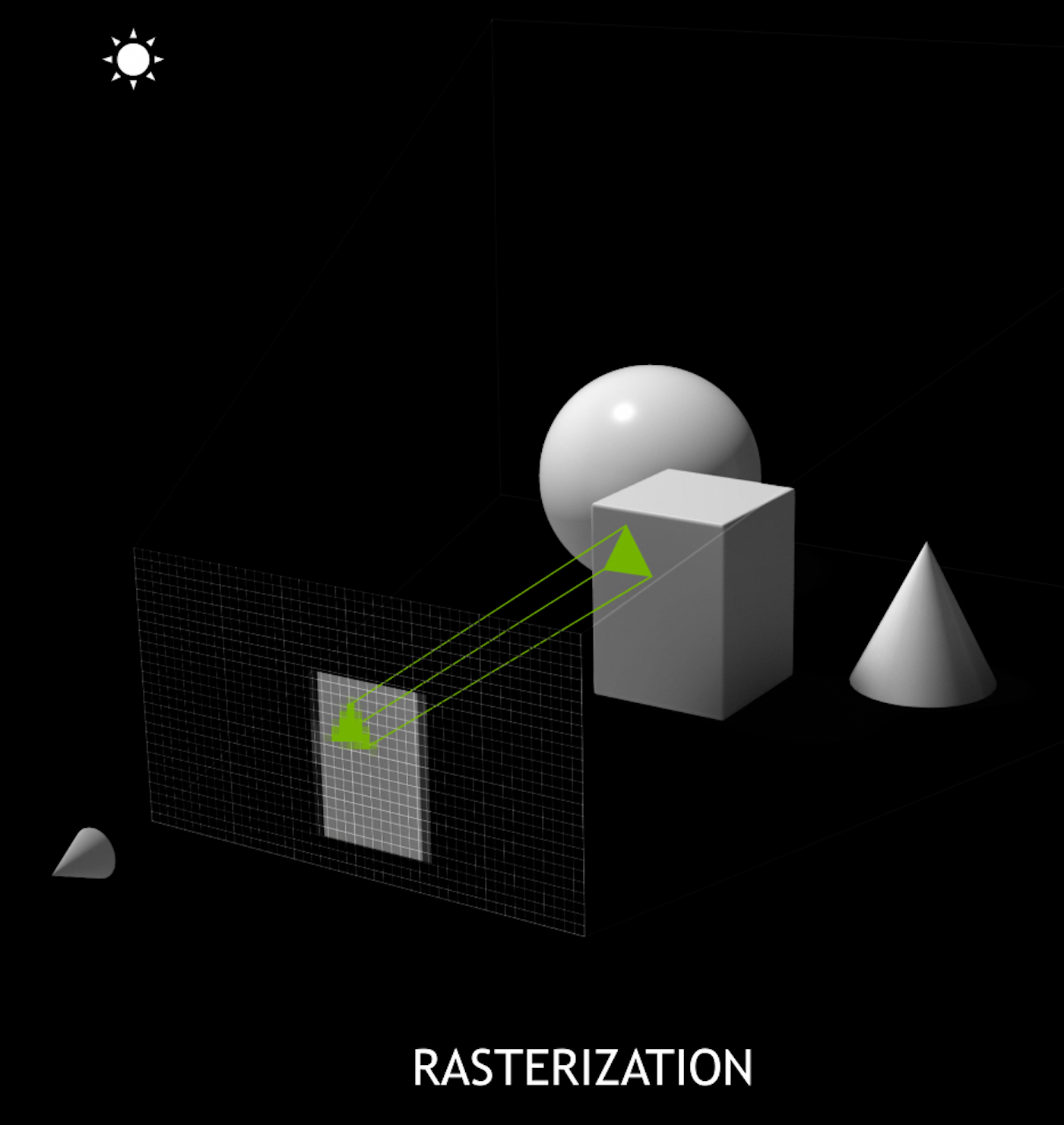
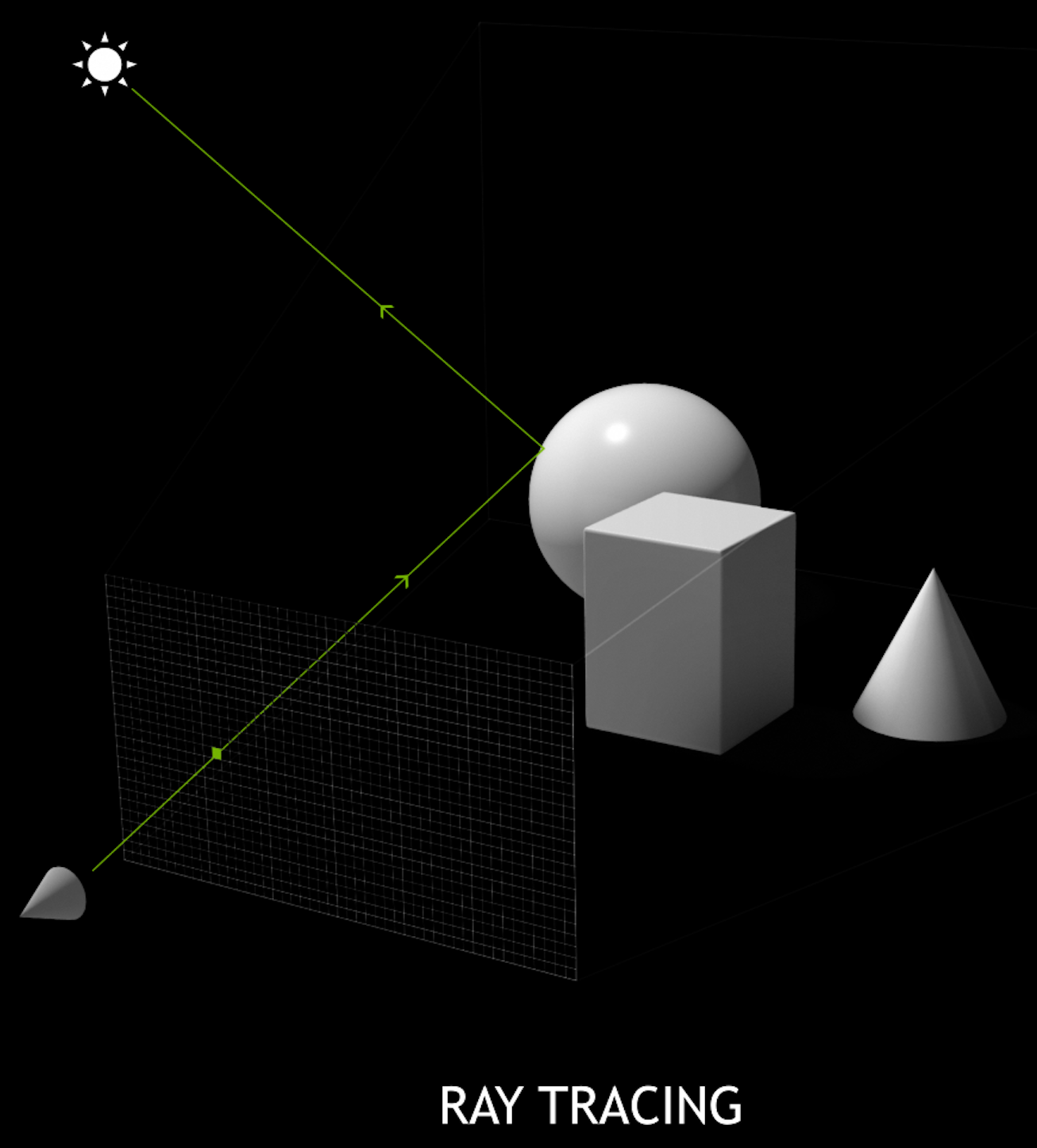
Rendering + Photon Simulation : Limited by Ray Geometry Intersection
Not a Photo, a Calculation
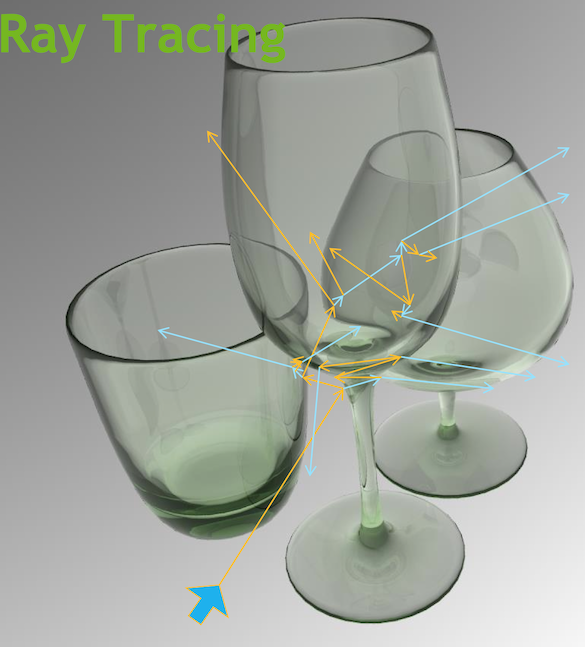
Ray Tracing Tools can Help Optical Photon Simulation
- industry continuously improving ray trace performance
- NVIDIA Turing GPU : raytrace dedicated "RT Cores"
- Up to "11 GigaRays per second" per GPU
https://nvidianews.nvidia.com/news/nvidia-reveals-the-titan-of-turing-titan-rtx
TITAN RTX : 72 Raytrace Dedicated RT Cores, 4608 CUDA Cores, 24GB VRAM, 2500 USD
NVIDIA® OptiX™ Ray Tracing Engine -- http://developer.nvidia.com/optix
OptiX Raytracing Pipeline
Analogous to OpenGL rasterization pipeline:
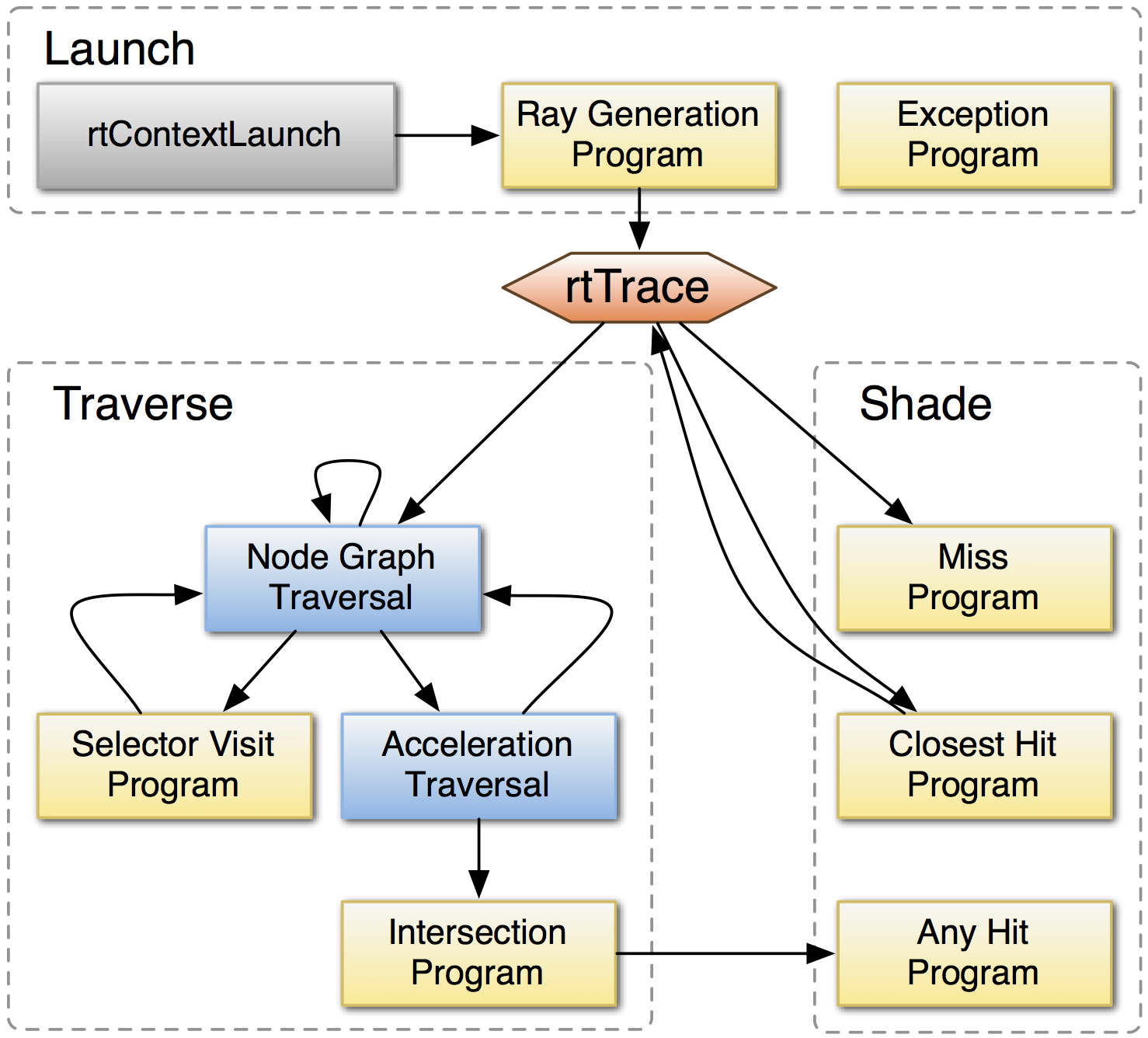
OptiX makes GPU ray tracing accessible
- accelerates ray-geometry intersections
- simple : single-ray programming model
- "...free to use within any application..."
- access RT Cores[1] with OptiX 6.0.0+ via RTX™ mode
NVIDIA expertise:
- ~linear scaling up to 4 GPUs
- acceleration structure creation + traversal (Blue)
- instanced sharing of geometry + acceleration structures
- compiler optimized for GPU ray tracing
https://developer.nvidia.com/rtx
User provides (Yellow):
- ray generation
- geometry bounding box, intersects
[1] Turing+ GPUs eg NVIDIA TITAN RTX
BVH
Opticks : GPU Geometry starts from ray-primitive intersection
- 3D parametric ray : ray(x,y,z;t) = rayOrigin + t * rayDirection
- implicit equation of primitive : f(x,y,z) = 0
- -> polynomial in t , roots: t > t_min -> intersection positions + surface normals
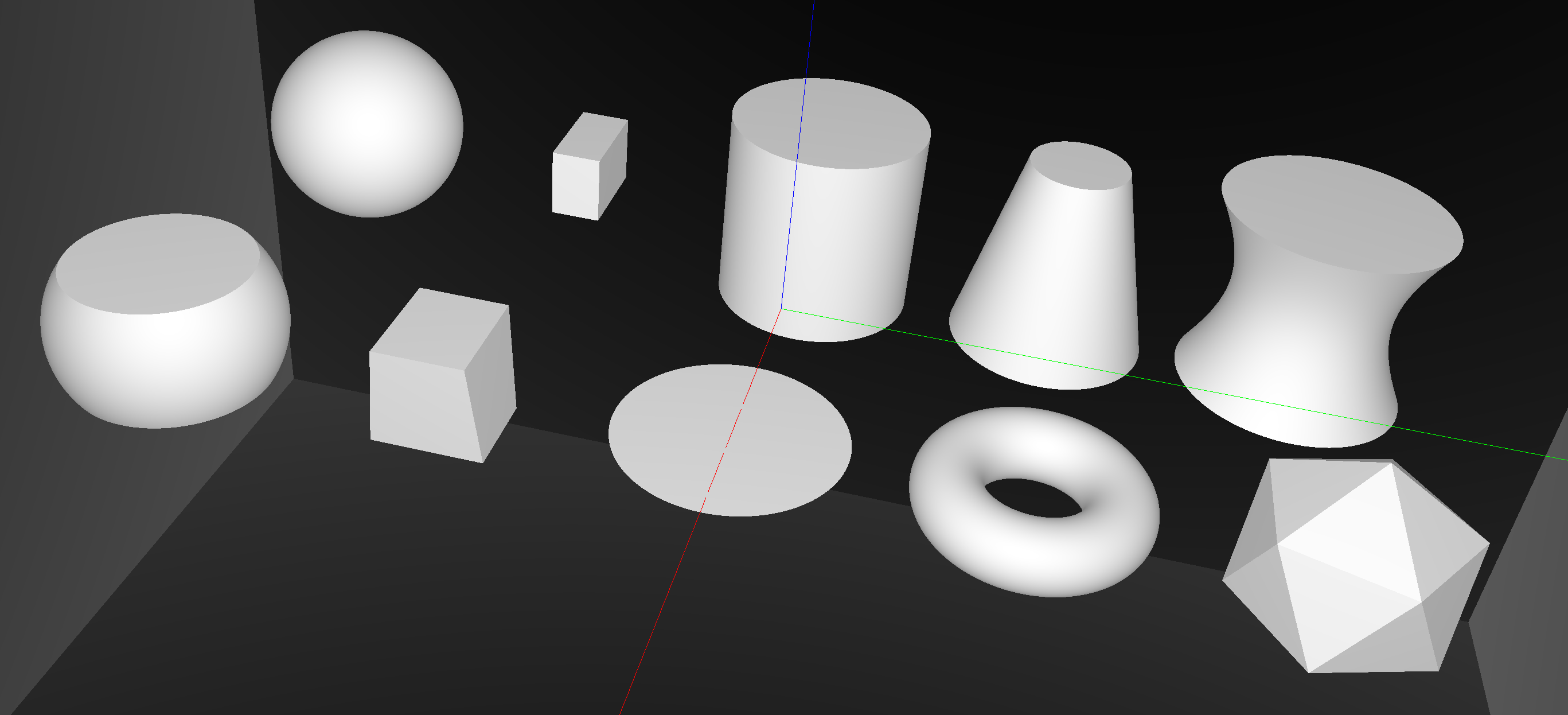
CUDA/OptiX intersection for ~10 primitives -> Exact geometry translation
Ray intersection with general CSG binary trees, on GPU
Outside/Inside Unions
dot(normal,rayDir) -> Enter/Exit
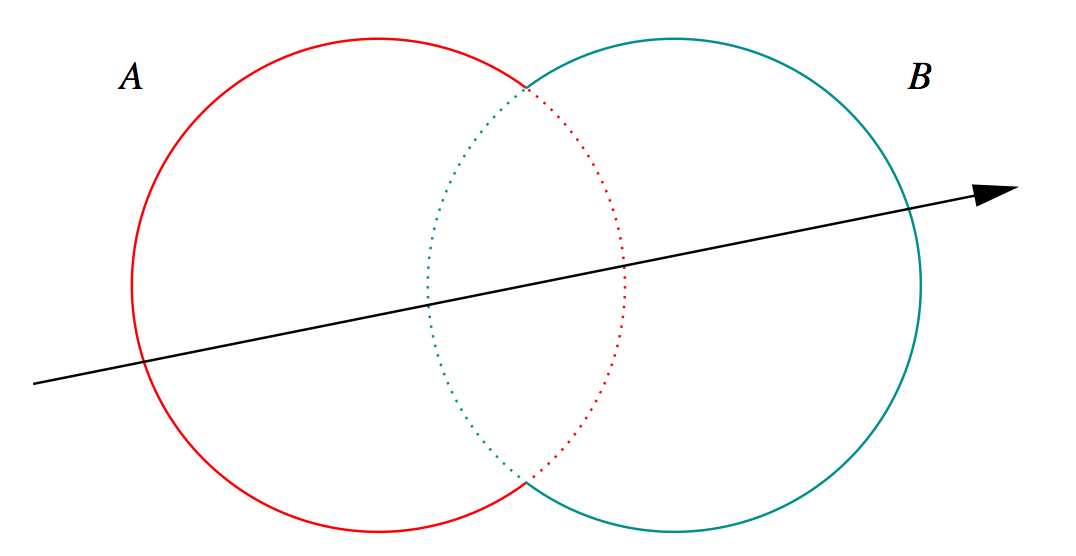
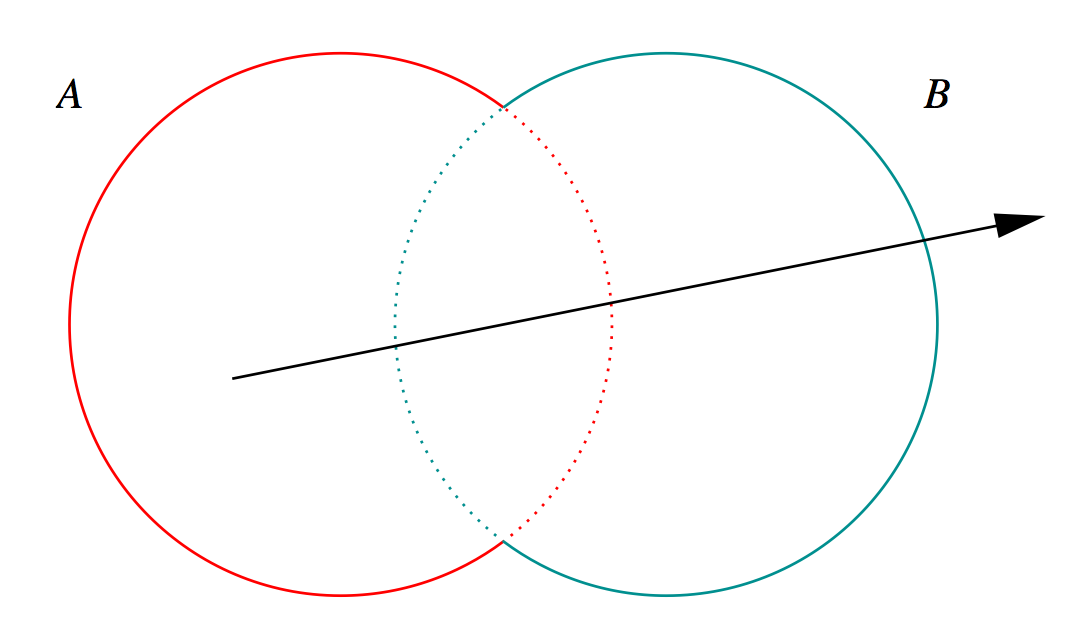
- A + B boundary not inside other
- A * B boundary inside other
Pick between pairs of nearest intersects, eg:
| UNION tA < tB | Enter B | Exit B | Miss B |
|---|---|---|---|
| Enter A | ReturnA | LoopA | ReturnA |
| Exit A | ReturnA | ReturnB | ReturnA |
| Miss A | ReturnB | ReturnB | ReturnMiss |
- Nearest hit intersect algorithm [1] avoids state
- sometimes Loop : advance t_min , re-intersect both
- classification shows if inside/outside
- Evaluative [2] implementation emulates recursion:
- recursion not allowed in OptiX intersect programs
- bit twiddle traversal of complete binary tree
- stacks of postorder slices and intersects
- Identical geometry to Geant4
- solving the same polynomials
- near perfect intersection match
- [1] Ray Tracing CSG Objects Using Single Hit Intersections, Andrew Kensler (2006)
- with corrections by author of XRT Raytracer http://xrt.wikidot.com/doc:csg
- [2] https://bitbucket.org/simoncblyth/opticks/src/tip/optixrap/cu/csg_intersect_boolean.h
- Similar to binary expression tree evaluation using postorder traverse.
Opticks : Translate Geant4 Geometry to GPU, Without Approximation
Direct Geometry Translation
- automatic geo-management, simplifying usage
- unified handling of analytic and triangulated
- no separate export+import stages
- substantial reduction in Opticks code
- dependencies eliminated : Assimp, G4DAE
- G4 geometry[1] auto-translated to Opticks CSG
- geocache persisted, staleness check by digest
- Direct Geometry : Geant4 "World" -> Opticks CSG -> GPU
- much simpler : fully automated geo-management
- Material/Surface/Scintillator properties
- interpolated to standard wavelength domain
- interleaved into "boundary" texture
- "reemission" texture for wavelength generation
- Structure
- repeated geometry instances identified (progeny digests)
- instance transforms used in OptiX/OpenGL geometry
- merge CSG trees into global + instance buffers
- export meshes to glTF 2.0 for 3D visualization
- Ease of Use
- easy geometry : just handover "World"
- [1] G4 primitives used need corresponding Opticks implementations, contributions for
- any unsupported geometry are welcome
JUNO Geometry Changes to enable translation to GPU
Torus intersection
Double heavy quartic root finding
- works with OptiX 5.1, but precision problem in CSG combinations
- crashes with OptiX 6.0.0
- mere presence in OptiX kernel kills RTX mode performance by factor 10
Alternative Approach To Try
- ray marching (aka sphere tracing) signed distance functions (SDF)
- generate CUDA SDF code once per solid
- distils shape complexity into SDF
- avoids billions of tree traversals
- good potential for torus and complex CSG solids, eg PMTs
First 2 change geometry, last 2 change modelling only
- Guide Tube Torus : removed (for now)
- AVOIDED : OptiX 6.0.0 NOT working with torus intersect
- PMT_20inch_body : simplified neck
- FIXED : "cylinder - torus" -> polycone
- PMT_20inch_inner : simplified CSG modelling
- FIXED : depth 4 tree (31 nodes) -> 1 primitive
- sAirTT : CSG modelling coincidence avoided
- FIXED : "box - cylinder" : growing the subtracted
20inch PMT neck : "cylinder-torus" -> polycone
Opticks : Translate Geant4 Optical Physics to GPU (OptiX/CUDA)
GPU Resident Photons
- Seeded on GPU
- associate photons -> gensteps (via seed buffer)
- Generated on GPU, using genstep param:
- number of photons to generate
- start/end position of step
- gensteps : hybrid CPU+GPU generation
- Propagated on GPU
- Only photons hitting PMTs copied to CPU
Thrust: high level C++ access to CUDA

OptiX : single-ray programming model -> line-by-line translation
- CUDA Ports of Geant4 classes
- G4Cerenkov (only generation loop)
- G4Scintillation (only generation loop)
- G4OpAbsorption
- G4OpRayleigh
- G4OpBoundaryProcess (only a few surface types)
- Modify Cerenkov + Scintillation Processes
- collect genstep, copy to GPU for generation
- avoids copying millions of photons to GPU
- Scintillator Reemission
- fraction of bulk absorbed "reborn" within same thread
- wavelength generated by reemission texture lookup
- Opticks (OptiX/Thrust GPU interoperation)
- OptiX : upload gensteps
- Thrust : seeding, distribute genstep indices to photons
- OptiX : launch photon generation and propagation
- Thrust : pullback photons that hit PMTs
- Thrust : index photon step sequences (optional)
geocache_360
JUNO-360 benchmark with OptiX 6.0.0, RTX mode
Ray tracing Benchmark
- JUNO 360 degree view
- Equirectangular Projection
- very high resolution 59M pixels
- 10240x5760 = 8x8x1280x720
- compare GPUs and RTX mode
- checking scaling across multiple GPUs
bench_20190526_202537
bench_20190526_202537 2
NVIDIA OptiX 6.0.0 : RTX Mode
Ray trace performance improvements:
- 1.25x with TITAN V
- 3.5x with TITAN RTX (RT Cores)
- BVH traversal done in hardware
- analytic intersection still software
- triangle geometry can be done in hardware
- Initially was 0.33x with RTX
OptiX developers helped find the cause
- unused double precision torus code
- performance improved by eliminating .f64 from PTX, ptx.py
bench_20190526_143808
bench_20190526_143808 2
GPU Scaling Performance
Opticks on IHEP GPU Cluster
OptiX : Almost perfect scaling for 1,2,4 GPUs
- degrades for > 4 GPUs
- PCIe bus congestion, pinned host memory
- "cvd" selects GPUs
- CUDA_VISIBLE_DEVICES envvar
- R0/R1
- RTX mode OFF/ON
- NVIDIA Tesla V100 GPUs
- No RT Cores, RTX still gives ~ 1.25x
Validation : Systematic Scan of All 40 JUNO Solids
Masked Running
Repeatable bi-simulation of any photon subset
- essential for debugging
- limited to input photons (not gensteps)
- constructs curandState buffer subset
Create test geometries using solids, materials, surfaces from base geometry geocache
- 40 geometries
- test containers for all JUNO solids
- input photons
- feed same initial photons to Opticks and Geant4
- input cuRAND randoms to Geant4
- same random sequence for Opticks and Geant4
- bi-simulation executable
- save propagations from Opticks and Geant4 as OpticksEvents (.npy arrays)
Validation : Random Aligned Bi-Simulation -> Direct Array Comparison
3-way "zip" : 2*code + randoms
- Align CPU/GPU Random Number Sequences
- G4 random engine providing cuRAND sequence
- "Align" CPU/GPU codes (some jumps)
- simplest possible direct comparison
NPY serialized arrays
- convenient analysis with NumPy
- np.load(path, mmap_mode="r") : loading array slices
In [11]: pdv = np.where(dv > 0.0001)[0]
In [12]: ab.dumpline(pdv)
0 1230 : TO BR SC BT BR BT SA
1 2413 : TO BT BT SC BT BR BR BT SA
2 9041 : TO BT SC BR BR BR BR BT SA
3 14510 : TO SC BT BR BR BT SA
4 14747 : TO BT SC BR BR BR BR BR BR BR
5 14747 : TO BT SC BR BR BR BR BR BR BR
...
In [20]: ab.b.ox[pdv,0] In [21]: ab.a.ox[pdv,0]
Out[20]: Out[21]:
A()sliced A()sliced
A([ [-191.6262, -240.3634, 450. , 5.566 ], A([ [-191.626 , -240.3634, 450. , 5.566 ],
[ 185.7708, -133.8457, 450. , 7.3141], [ 185.7708, -133.8456, 450. , 7.3141],
[-450. , -104.4142, 311.143 , 9.0581], [-450. , -104.4142, 311.1431, 9.0581],
[ 83.6955, 208.9171, -450. , 5.6188], [ 83.6954, 208.9172, -450. , 5.6188],
[ 32.8972, 150. , 24.9922, 7.6757], [ 32.8973, 150. , 24.992 , 7.6757],
[ 32.8972, 150. , 24.9922, 7.6757], [ 32.8973, 150. , 24.992 , 7.6757],
[ 450. , -186.7449, 310.6051, 5.0707], [ 450. , -186.7451, 310.605 , 5.0707],
[ 299.2227, 318.1443, -450. , 4.8717], [ 299.2229, 318.144 , -450. , 4.8717],
...
tv21_1M_a
tv21_1M_a 2
"Darkroom" Geometry Testing
Random Aligned Bi-Simulation
- shoot 1M photons at solid
- save Geant4 and Opticks propagations
- NumPy analysis
Future flags (next step point)
- Cyan
- BT : boundary transmit
- Orange
- SA : surface absorb
- Yellow
- BR : boundary reflect
tv21_1M_c
tv16_Fastener
absmry_1M
absmry_1M 2
Mis-aligned + Deviation Summary
- npho
- number of photons (1M)
- fmal
- mis-aligned history fraction mostly < 0.5%
- ndvp
- deviant photons mostly < 0.05% (500/1M)
- rpost_dv
- <16 step point positions, times (compressed)
- rpol_dv
- <16 step point polarizations (compressed)
- ox_dv
- final position, time, direction, polarization, wavelength (float)
- mis-alignment
- debug needed to duplicate G4 indigestion
- deviants
- f32 vs f64 + many bounces + "lever arm" ? (f64 tests to confirm)
ta34_1M
ta34_1M 2
Example Solid : sInnerWater
- nitem
- photons compared
- nelem
- floats compared (many millions)
- fwar/ferr/ffat
- fractions above deviation cuts
- ndvp
- total error/fatal photons
- BT(BR)
- boundary transmit(reflect)
- SC(AB)
- bulk scatter(absorb)
- SA
- surface absorb
Validation Issue 1 : History Mis-alignment : 0.01-0.50% of photons
3-way zipper snagged
- starts aligned, then history diverges
- py scripted lldb (macOS) required
- G4 random edge cases not yet duplicated
- Several tricks[1] already in use, more needed
Large Range 0.01% 0.50% 3% depending on extent
- PMT_20inch_inner2_solid(LV 19) 163/1M
- extra BR(boundary reflect) or BT(boundary transmit)
- sWorld(LV 39) 29906/1M ~3%
- large extent : direct photons travel 360m
- many "maxbounce" truncations, lots of scattering
ab.mal (LV 19)
aligned 999837/1000000 : 0.9998 : 0,1,2,3,4,5,6,7,8,9,10,11,12,13,14,15,16,17,18,19,20,21,22,23,24
maligned 163/1000000 : 0.0002 : 2908,4860,5477,12338,17891,18117,28709,32764,37671,43675,45874,...
0 2908 : * : TO BT BR BR BT SA TO BT BR BR BR BT SA
1 4860 : * : TO BT BT BT SA TO BT BT BT BT SA
2 5477 : * : TO BT BT BT SA TO BT BT BT BT SA
3 12338 : * : TO BT BR BT SA TO BT BR BR BR BR BR BR BR BR
...
ab.mal (LV 39)
aligned 970094/1000000 : 0.9701 : 0,1,2,4,5,6,7,8,9,10,11,12,13,14,16,17,18,19,20,21,22,23,24,26,27
maligned 29906/1000000 : 0.0299 : 3,15,25,80,132,288,294,329,376,377,379,436,511,536,655,662,...
slice(0, 25, None)
0 3 : * : TO BT SC BR BR BR BR BR BR BR TO BT SC BR BR BR BR BR SC BR
1 15 : * : TO BT SC BR BR BR BR BR SC BR TO BT SC BR BR SC BT SC BT SC
2 25 : * : TO BT SC BR BR BR AB TO BT SC BR BR BR BR BR BR BR
3 80 : * : TO BT BT SC BT BR AB TO BT BT SC BT BR BR SC BR AB
...
[1] https://bitbucket.org/simoncblyth/opticks/src/tip/notes/issues/alignment_options_review.rst
Validation Issue 2 : History Aligned but Deviant : Mostly < 0.05% of photons
Interference : Mis-aligned <-> deviant
- mis-aligned, but same history -> large "invalid" deviations
- TODO: improve alignment judgement
- eg: compare randoms collected at end of propagations --utaildebug
float vs double precision
- Likely cause of deviations
- small deviations grow from bounce to bounce
- "lever arm" amplification of small errors depending on geometry
- Opticks uses double only when unavoidable (eg scattering/absorption distance from log(u) [1])
- Geant4 uses double everywhere
- double has high performance cost on GPU
- OptiX can only partially[2] operate in double precision
- Plan
- attempt to isolate sources, with double precision tests
[1] https://bitbucket.org/simoncblyth/opticks/src/tip/optixrap/cu/propagate.h
[2] https://devtalk.nvidia.com/default/topic/1036155/optix/double-precision-of-ray-lengths/
Performance : Scanning from 1M to 60M photons
Raised photon ceiling 3M->60M
- fixed memory leaks
- dynamic pre-cooking[1] avoids 200GB files
Issue : aimed for 100M, only reached 60M
- less hits than expected for 70M+
tboolean-box test Geometry + input photons
- input photons : convenient for debugging, but high overheads
Production Mode : does the minimum
- only saves hits
- skips : genstep, photon, source, record, sequence, index, ..
- no Geant4 propagation
Multi-Event Running : measure interval and launch
- interval : avg time between successive launches (includes all overheads)
- upload photons/gensteps
- launch : avg photon generation + propagation time
- download hits
[1] TCURAND GPU randoms on host https://bitbucket.org/simoncblyth/opticks/src/tip/thrustrap/TCURAND.hh
NHit
Opticks_vs_Geant4
Opticks_vs_Geant4 2
Drastic Speedup >> 1000x
Simple Test Geometry, Input Photons
G4 extrapolation vs Opticks Times
- 60M photons
- Geant4 ~6,000s (100min)
- Opticks 0.38-0.84s (RTX ON)
- RTX MODE giving ~6x speedup
- Expect input gensteps closer to "launch"
- launch : best case
- interval : worst case
Full geometry speedup expected to be more, as more ray tracing.
Overheads
Opticks_Speedup
RTX_Speedup
Opticks[1] : Aims to Revolutionize JUNO Muon Simulation
100 GeV muon, millions of photons
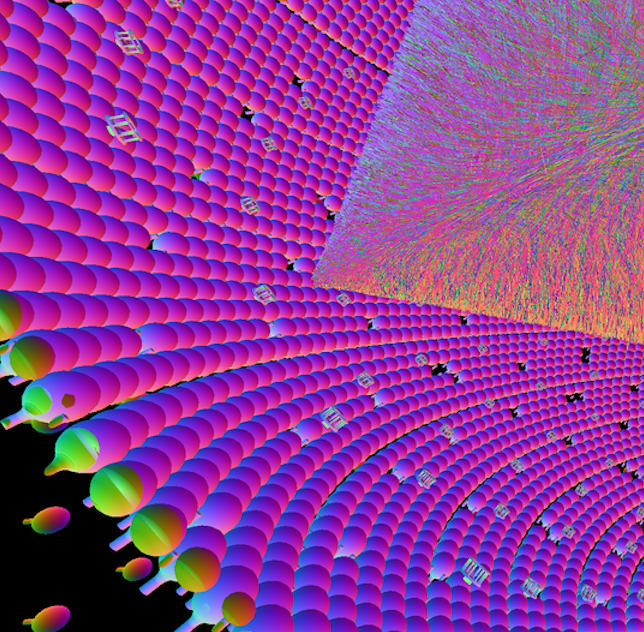
State-of-the-art GPU ray tracing[2] applied to optical simulation
- replaces Geant4 optical simulation with GPU equivalent
- translate G4 geometry to GPU without approximation[3]
- port G4 optical physics to CUDA[4]
Optical photons generated+propagated entirely on GPU
- only photons hitting PMTs require CPU memory
- optical photon CPU memory --> ~zero
- muon workload perfect for GPUs, Opticks >> 1000x Geant4
- optical photon simulation time --> ~zero
Status : validation iterations ongoing
- direct comparison of random aligned bi-simulations
- geometry changes made at GDML level
[1] Open source project http://bitbucket.org/simoncblyth/opticks
[2] NVIDIA OptiX ray tracing engine
[3] using innovative Constructive Solid Geometry implementation on GPU
[4] scattering, boundary, reemission, absorption
genstep_interface
Opticks Links
- https://simoncblyth.bitbucket.io
- Opticks presentations and videos
- https://juno.ihep.ac.cn/cgi-bin/Dev_DocDB/ShowDocument?docid=3927
- Opticks visualization screen capture movie of JUNO
- https://groups.io/g/opticks
- Opticks mailing list archive
- opticks+subscribe@groups.io
- send email to this address, to subscribe
- https://simoncblyth.bitbucket.io/opticks/index.html
- Opticks installation instructions
- https://bitbucket.org/simoncblyth/opticks
- Opticks code repository